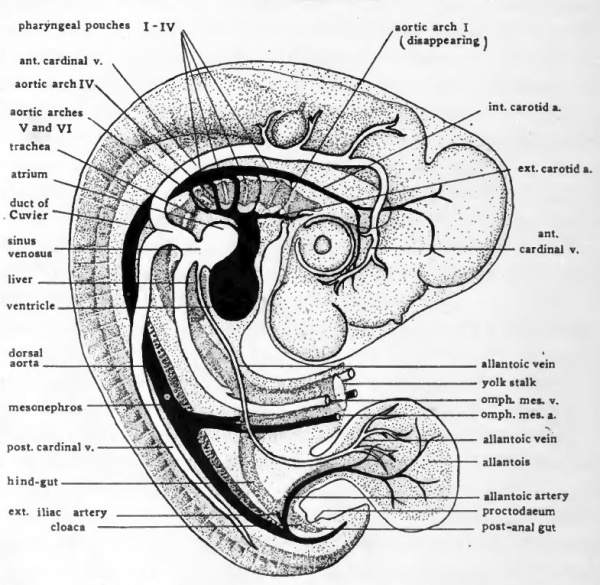
96 Hour Chick Embryo Serial Section
Contents • • • • • • • • Introduction Historically, an important way of teaching embryology is by direct observation of histological sections at different stages of development. Even today the best way to observe anatomical development and relationships is by direct observation in serial sections through the embryo and fetus.
The sections below are from the original teaching set prepared at UNSW that were digitized and put online in 1996 as a teaching resource. The Stage 13 and 22 images are available in at least two formats, an unlabeled set (image 1 - 49) and a labeled set (image 50 - 98) in a rostro-caudal sequence (head to tail).
Of 96 Hours Chick Embryo: 1. In the chick embryo of 96-hours of incubation, the entire body has been turned through 90 degree and the embryo lies with its left side on the yolk. At the end of 96 hours the body folds have undercut the embryo so that it remains attached to the yolk only by a slender stalk. Start studying 96-Hour Chick Embryo. Learn vocabulary, terms, and more with flashcards, games, and other study tools. Section between the origin of the lung buds and a point just anterior to the liver and pancreatic rudiments. The mesonephros may be seen at 72 hours and the metanephros at 96 hours. Portions give rise to gonoducts.
Stage 22 embryo also has a set of selected images showing more detail of some organ and tissue development. Instrukciya po sborke kubika rubika iz zhurnala nauka i zhiznj a man. In addition, there are now 3D animations based upon reconstruction of the embryos from these serial sections. 2011 - Selected slides are currently being rescanned at to show specific developmental details.

Author Comments Start here by looking through the early (week 4) embryo (stage 13) labeled images. It is not so important to identify every single feature, observe what structures are present and where they are in the middle of the embryonic period (week 4). Then if you like, look through the unlabeled images. What can you now recognise? Next look through the late (week 8) embryo (stage 22) labeled images as you did before. Then look through the same embryo stage selected labeled images. These show organ and tissue development of specific structures by the end of the embryonic period. Serial number idm.
What has changed? Finally put the systems together by watching the embryo animations based upon these sections. How different are the embryonic systems to the adult anatomy? More about these. Links: Carnegie Stage 13 About Stage 13 Embryo Sections - This image is from a serial section of a 6mm CRL pig embryo with some features of the Stage 14 embryo. This embryo is approximately equal to the day 42 human embryo.
Use these serial images to identify internal features and relationships that exist within the embryo at this stage. Then compare these images with the later features of the Carnegie stage 22 human embryo.